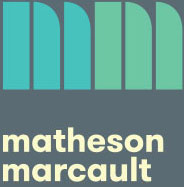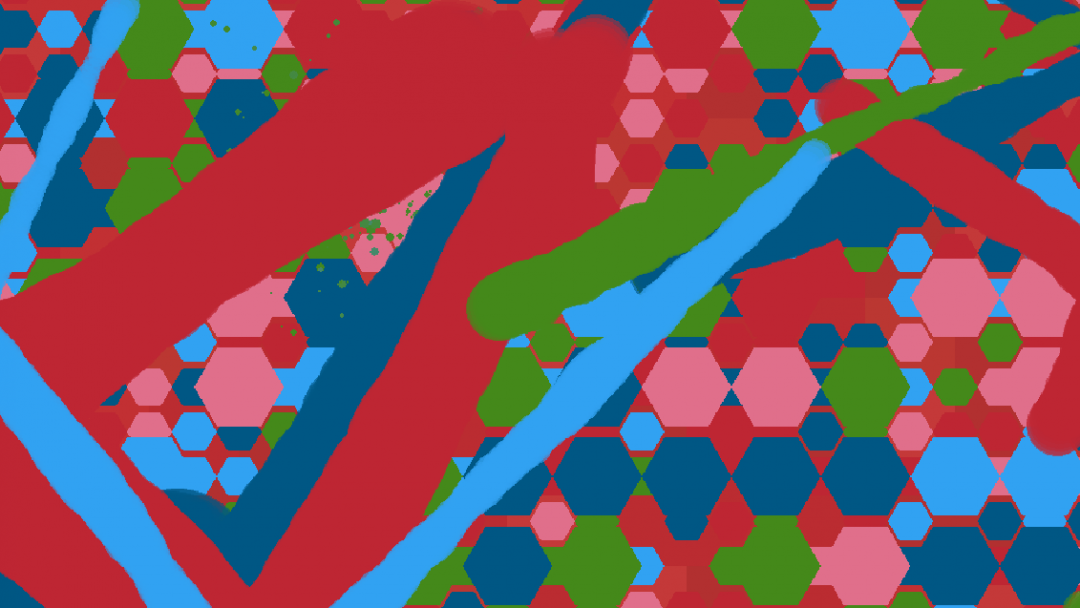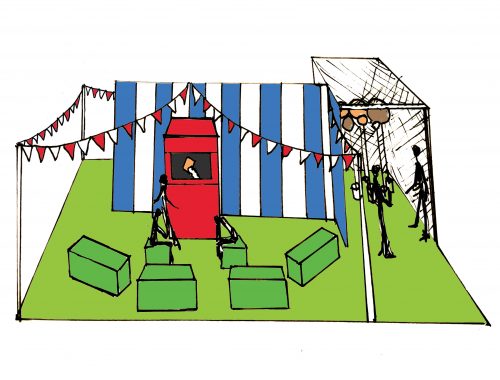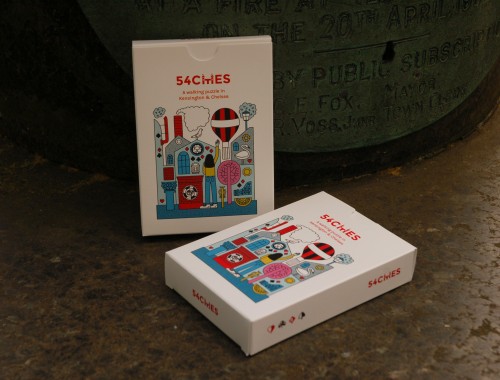We recently spent a week at QUAD in Derby as part of our digital participatory artist residency. We’ll be going back in February; this post discusses what we’ve been making so far, and the games we’ve been testing out with different groups of players at QUAD.
When we play a digital game, we expect the game to pay attention to us. To know what we’re doing. To respond. Which is reasonable, right?
But the board of a board game doesn’t know what piece you’ve put down (well, with some exceptions). A hopscotch grid chalked on the ground doesn’t light up to let you know where your stone fell.
During our time at QUAD, we’ve been thinking about what happens if you try to make digital games where the play is socially, rather than technologically, mediated. What possibilities exist in this design space that are different from both traditional digital games, and from purely analogue installations?
Playable Patterns is an ongoing experiment in playable digital work where the interaction and play happens purely between people; where the computer doesn’t look at what you’re doing. Specifically, it’s a series of patterns that move and change in particular ways, designed to be projected onto walls or floors in order to enable people to play.
The game mechanics that this supports need to be really simple – ideas that people can get their head around in a few seconds. So for example, a gradually changing maze (above) that players have to navigate through with the shadow of their finger, holding their hand in front of the projector. Or (see top) a grid of shapes shot over with unpredictable trails of paint, where different players pick a colour and can only step on that colour, moving precariously to keep safe on the board as it changes. Or (below) a collection of photos that are revealed by a slowly disappearing board, while passers-by race to guess what they show.
There’s obviously some relationship between this and, say, Hide&Seek’s old Tiny Games app (which I worked on): quick-to-explain games distributed digitally where the rules are then enacted and enforced by players. But the ability to create our own playing space means that very different types of games are possible.
We started off by making a range of different patterns that we could adjust live – making them move or stay still, switching shapes, switching colour palettes, replacing colours with photos, adding changing numbers or letters or paint blobs, getting faster or slower while people played. This direction seems like it’s going to be fun for facilitated play, or for people who like inventing their own games – there are an awful lot of different combinations to explore. But it’s not something we’d expect to be able to set up somewhere in public and have many people genuinely invent their own games. One of the things we learnt from our research at King’s on the One Easy Step project is that most people don’t really want to come up with their own rules, and a sentence or two suggesting ways to play can make a lot of difference.
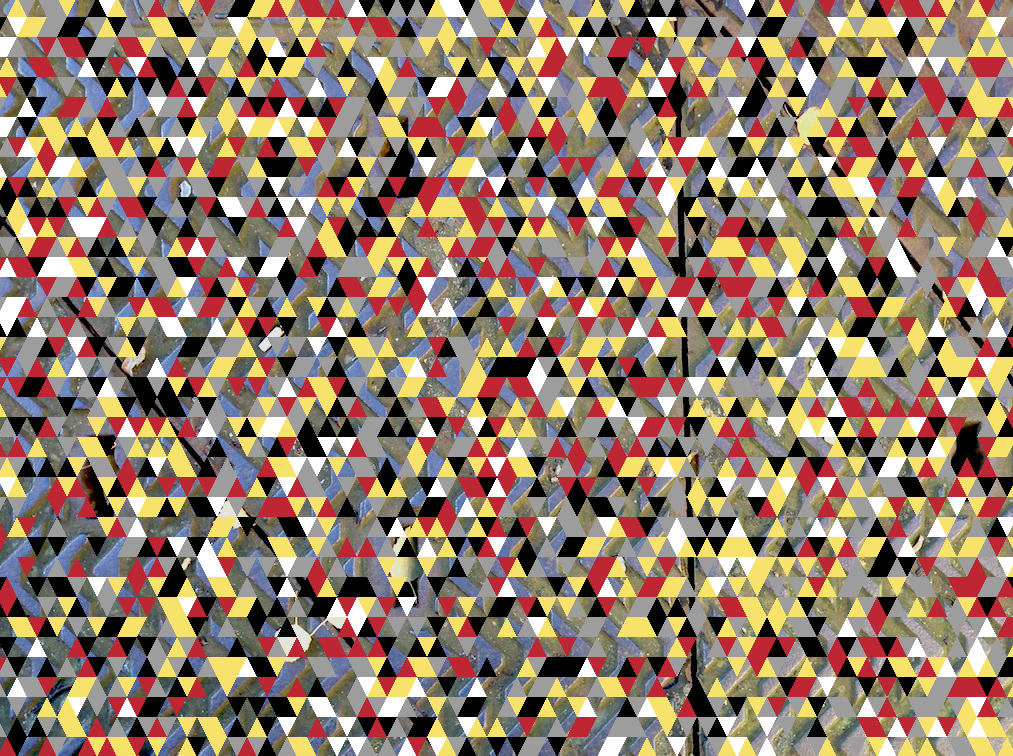
We’re currently working on getting 15 or so different playable patterns working well and able to stand alone as coherent games without a facilitator. We’re also thinking a lot about what the affordances of this particular medium are. So: what makes this different from just sticking down vinyls or painting on the ground? What can we do here that we couldn’t with tape and chalk? The answers are something like:
- It’s easy to update – for example, if the patterns use photos from the local area, it’s easy to feed in new pictures that players take.
- It presents a range of different games – whether that means changing the pattern at different times of day depending on the potential players who are around, cycling randomly through a selection of pattern types, or giving people a big button to press whenever they want to change the game.
- If there’s a facilitator present it can be controlled live – whether that’s a matter of choosing a particular pattern, or defining its parameters, or having a lot of different pattern elements that can be combined in unpredictable ways.
- And most importantly, a particular pattern can move and change: presenting new challenges, getting harder or easier, and just presenting games that it wouldn’t be possible to play on a static image.
The other question for us at the moment is: what makes this most different from a traditional digital game, where the computer bothers to look at you and see what you’re doing? What strengths does this form have that we can take advantage of? Well, based on the week we’ve spent so far, it’s something like:
- The enforced social mediation creates a different sort of feeling among players
- You can include tasks that humans can judge easily, but which would be a challenge for a computer
- You can more easily encourage people to set their own parameters for success or failure
- It’s easy (and cheap) to set up and to move around: the only requirements are a computer and a projector
- And most importantly, it’s way easier to make than any sort of physical game where the computer has to pay attention to the players. Way, way, way, way easier. SO much easier. Which in turn means it’s possible for us to make lots of different patterns fast, drawing on specific details in an environment, potentially creating different versions of each pattern or whole new patterns for a different run of the game. It means that when the underlying work is finished, it’ll be possible to make a meaningfully site-specific set of patterns in a few days rather than a few weeks. It means I can do the programming myself rather than handing over a game design document to someone else; that I can remain aware of every little decision, and find possibilities for the direction of the game design that I would have missed if I’d been at a further remove. It means we can concentrate on the game design rather than on getting an awkward piece of technology to work.
There are challenges as well, of course. Like communicating clearly that the game isn’t watching you and that that’s okay – that you really do have to decide for yourself. And the simplicity of it all means that it’s important to get the little details absolutely right – that the distance between triangles is perfect, that the movement of patterns feels fair while remaining unpredictable, that the rules are as concise and easy to understand as possible. We’ll be back in Derby in February with a pile more patterns to try.
